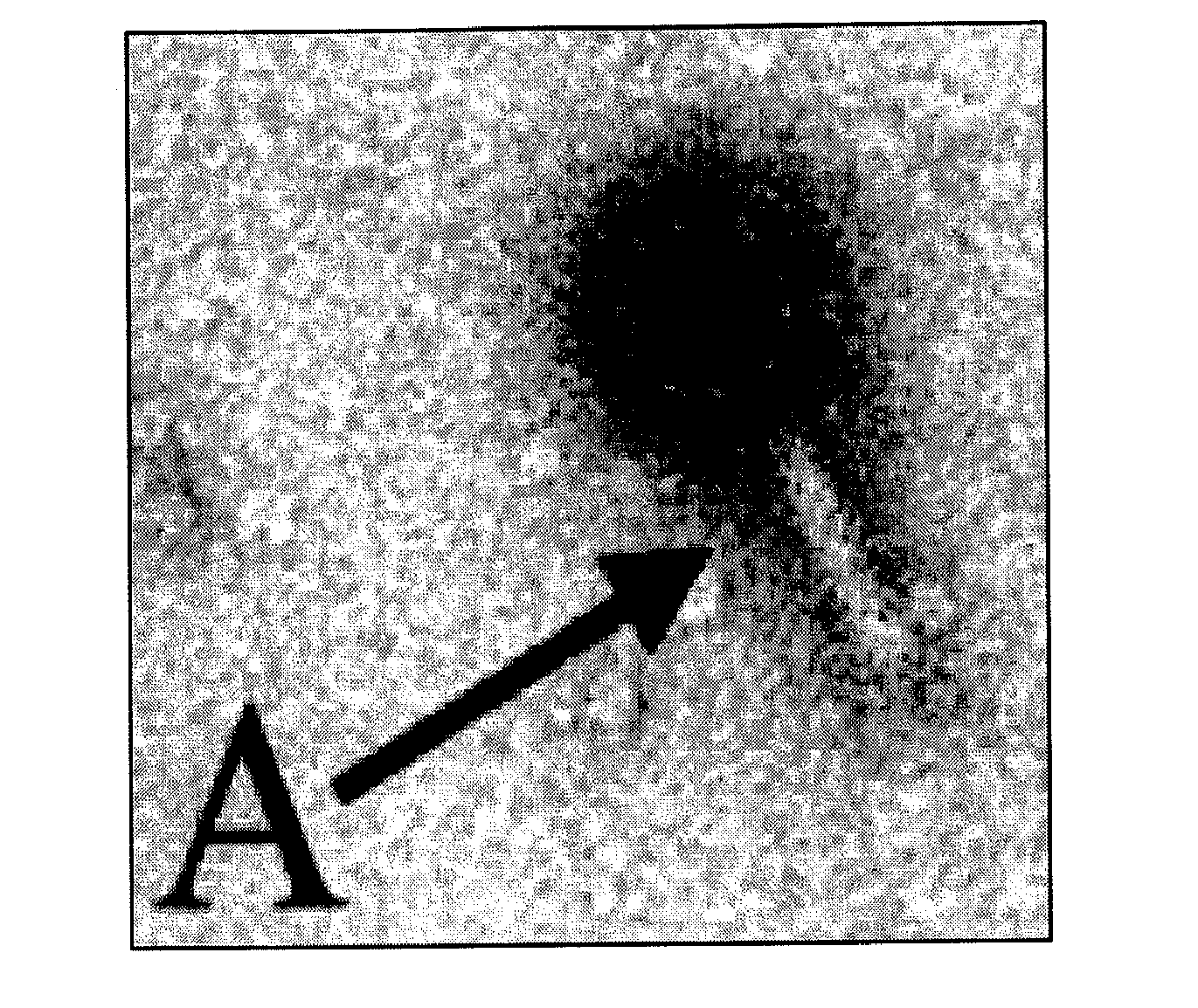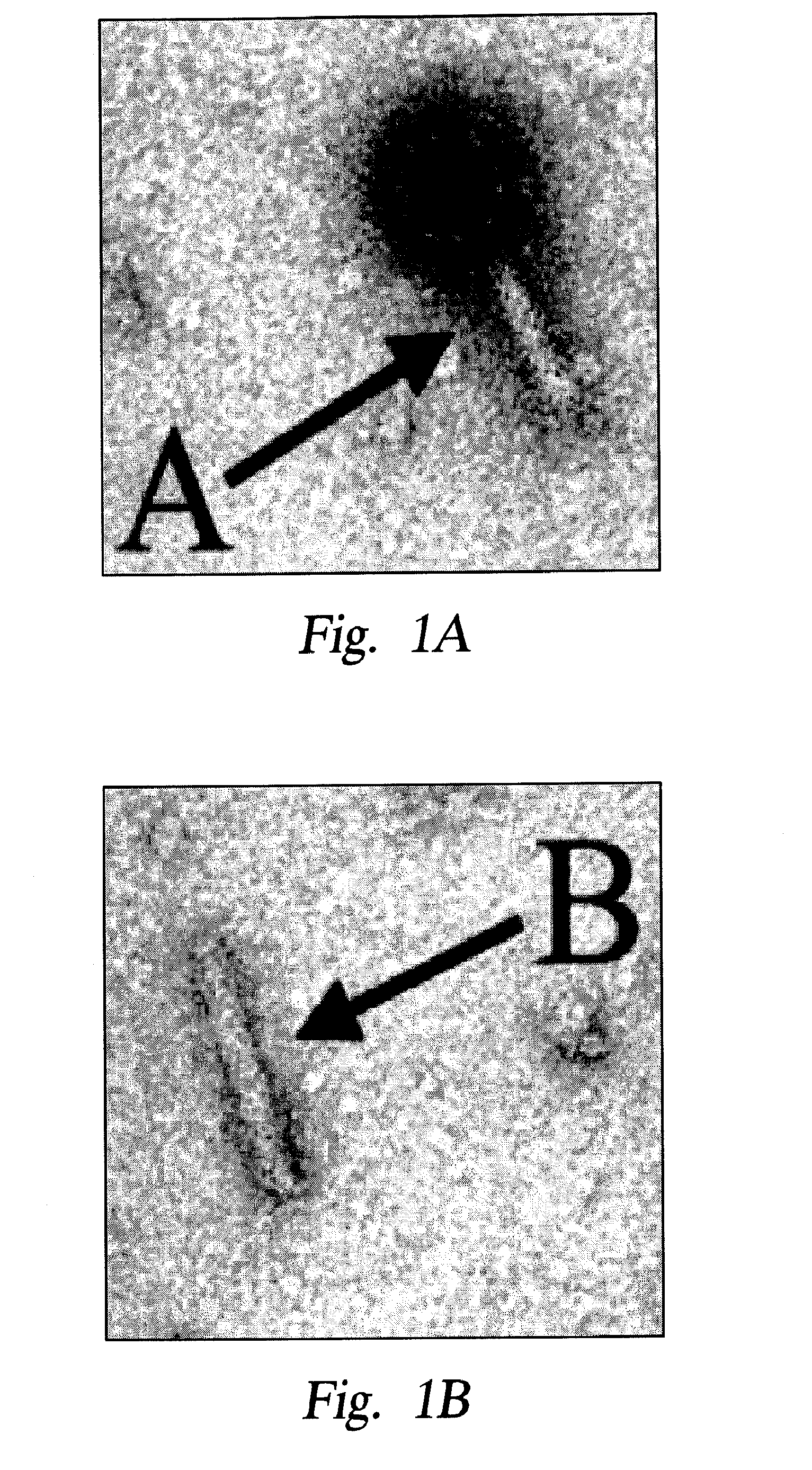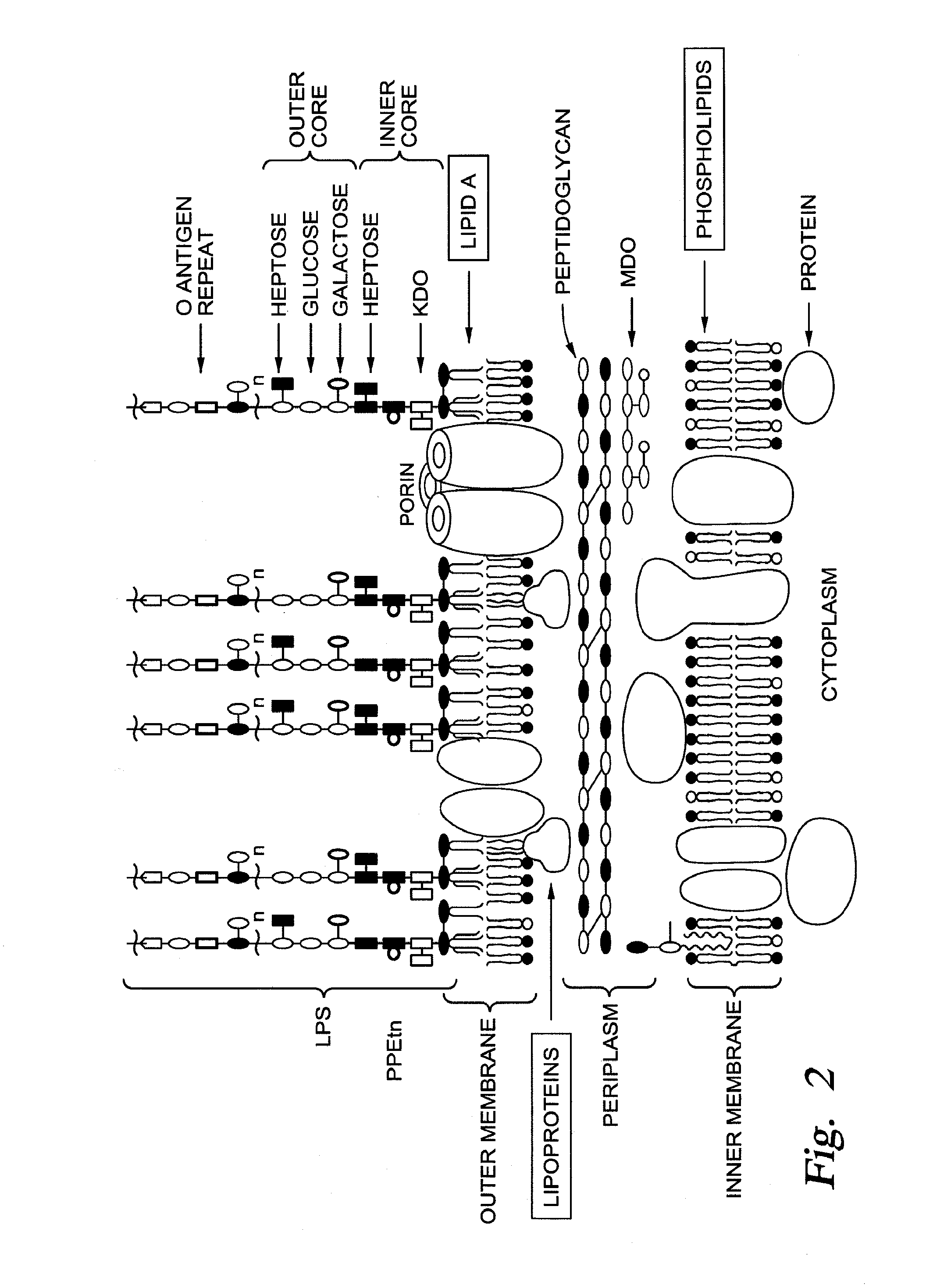Chimeric Phage Tail Proteins and Uses Thereof
a technology of phages and tail proteins, applied in the field of phage tail proteins, can solve the problems of increasing public health problems, new antibacterial drugs having trouble keeping up with the problem, incorrect diagnosis, etc., and achieve the effect of reducing the bacterial population
- Summary
- Abstract
- Description
- Claims
- Application Information
AI Technical Summary
Benefits of technology
Problems solved by technology
Method used
Image
Examples
example 1
Redirecting the Pseudomonas R2 Pyocin
[0054]One approach is to re-engineer an existing pyocin-like multi-protein structure to recognize Lipid A as a receptor. The best candidates are the original multi-protein structures, the pyocins of Pseudomonas. There are two types of phage-tail-like pyocins, the R pyocins and F pyocins. R pyocins are equivalent to the tails of the myophages, one of the major morphotype groups of phages (FIG. 4, Appendix), distinguished by contractile tails and six long tail fibers emanating from a base-plate. The F pyocins are equivalent to the tails of siphophages (FIG. 4, Appendix), which are non-contractile, flexible and have four side tail fibers emanating from a cone tip, which itself has a tail spike. R pyocins and myophages are ideal for engineering adsorption specificity because the receptor-binding domains are located near the tip end of the long tail fibers. Each tail fiber consists of a trimer of the tail fiber protein, which are arranged with the N-t...
example 2
Creating and Engineering a Contractile Multi-Protein Structure from Temperate E. coli Myophages
[0059]Given the modular nature of most phage genes, it is possible that the trial-and-error approach outlined above has a reasonable chance of working, or at least clearly delineating any potential problems with the design. An initially falsifying result would be that we might obtain recombinant multi-protein structures which have the fully assembled BPINTD-substituted Prf15 molecules, but that these multi-protein structures either do not bind to the surface of target cells, or do so but do not kill the target cells. Even in that case, it would be instructive to investigate at what level the recombinant fiber fails to function, and to accomplish this a full range of electron microscopic tools are available, including cryo-EM tomography, that would reveal whether or not the distinct steps of irreversible multi-protein structure adsorption and contraction are occurring.
[0060]Nevertheless, a ...
example 3
Engineering Gram-Positive Multi-Protein Structures
[0063]We have identified an innate immunity protein domain (Nod2CTD) that could confer universal host range on a Gram-positive multi-protein structure. It would not be beyond reason that we could substitute Nod2CTD for BPINTD in our Gram-negative Universal Multi-protein structure and have the new chimera be lethal for Gram-positive bacteria. However, this may not because of the differences in the thickness of the Gram-positive peptidoglycan layer through which the tail tube must protrude to reach the cytoplasmic membrane. In this case, construction of a Universal Multi-protein structure for Gram-positive bacteria much be considered more speculative, for several reasons. First, although the gross morphology of phages of Gram-positive and Gram-negative bacteria is basically the same, much less is known about the process of phage adsorption and DNA injection. Second, no natural multi-protein structures have been reported, although it ha...
PUM
| Property | Measurement | Unit |
|---|---|---|
| Structure | aaaaa | aaaaa |
| Permeability | aaaaa | aaaaa |
| Protein structure | aaaaa | aaaaa |
Abstract
Description
Claims
Application Information
 Login to View More
Login to View More - R&D
- Intellectual Property
- Life Sciences
- Materials
- Tech Scout
- Unparalleled Data Quality
- Higher Quality Content
- 60% Fewer Hallucinations
Browse by: Latest US Patents, China's latest patents, Technical Efficacy Thesaurus, Application Domain, Technology Topic, Popular Technical Reports.
© 2025 PatSnap. All rights reserved.Legal|Privacy policy|Modern Slavery Act Transparency Statement|Sitemap|About US| Contact US: help@patsnap.com



